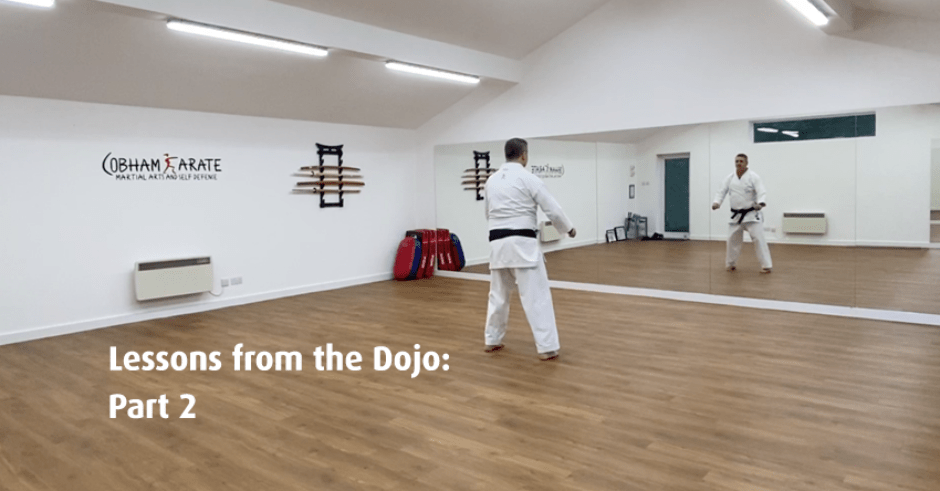A lifetime practitioner of martial arts it has for many years been a dream of mine to have my own dojo. As that dream has for the first time been fulfilled my martial arts journey enters a new phase. As it does I have started to reflect on what I have learnt from all my instructors past and present and how so many of these lessons apply to life in general and leadership specifically.
Firstly it’s important to say that I practice martial arts not to be able to fight but to be able to avoid fights or violence. And so far I have done so. Martial arts properly studied is about the following:
- Perseverance and hard work
- Mental and physical discipline
- Respect and Humility
- Lifelong learning and Coaching
In this essay, I am going to focus on Humility and Respect, because in many ways I think they are different sides of the same coin. And Humility and respect are also closely intertwined with Life Long Learning and Coaching covered in the previous essay.
When people learn I am a martial arts practitioner some of them will ask me to show them a technique or demonstrate a punch or a kick. If and when I agree, (seldom), after building up their expectations, I simply demonstrate the bow and in the face of their disappointment go on to tell them that this, done properly, is a cornerstone of karate, and martial arts.
It is completely different from the bow one might give to a member of the royal family, for example when I was privileged to meet the Queen, because the bow is one way, the Queen does not bow back. In martial arts when you bow you might be bowing to your instructor, but he/she bows back to you. When you start working with a particular partner, you both also bow to each other. The respect shown in the bow is given both ways! The bow happens at the same time, one does not follow the other. To bow in this way and be authentic you have to show high levels of both humility and respect. Even if the student you are working with is a more junior grade, because you acknowledge that by working with them you will both teach and learn. And that as a practitioner you carry the obligation, in service of the art, to do both.
And when you are both humble and respectful, you are open to learning from all, your instructor, your “peers” and those more junior. At the same time as being open to learning through you are also aware of your responsibility to teach in a system that forms in part a continuous self-improvement drive.
Now, after 30 years working incorporates around the world I can say with a fair amount of confidence that Respect and Humility are often in fairly short supply. Over the past few years, in particular, more and more is being written about the importance of respect and humility in leadership. (eg Simon Sinek). For example, when an organisation announces in the same quarter that it will make thousands of jobs redundant, and make more millionaire employees, you have to ask if the profit motive and greed have not only overridden common sense but also respect and humility.
In the past, male-dominated leadership teams in a more “ command and control” environment had typically reached their level of seniority by working “their way up the corporate ladder” and where the so-called ‘experts’ who would lead their teams/organisations, from the front. Knowing what was best they would issue the instructions/policies/strategies/resource allocation etc from the top with confidence. This has already started to change of course but if organisations are to thrive in the new world this transformation requires a swift kick start. (pun intended)
Hubris has to be replaced by humility as leaders need to feel confident not knowing everything thereby making themselves open to input and learning from all sources. And whether you are learning from them or not a deep respect from a place of authenticity for all stakeholders is the only way to align people behind a common purpose. I also believe that this “cultural shift” will support an organisation less likely to fall prey to some of the significant corporate scandals we have seen over the past few decades.
Sustainable businesses will have to look very different very quickly if they are to thrive in the future.
Andrew Fox
If you missed it, you can read Part 1 of the series here.


